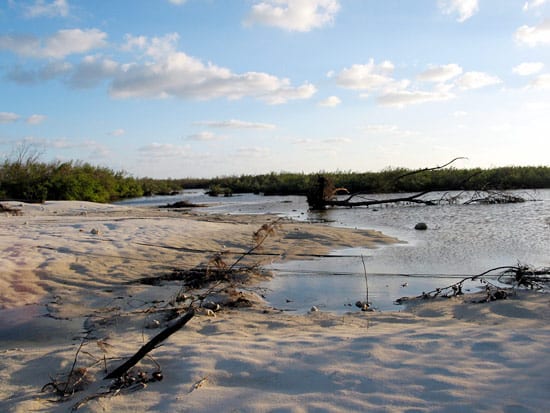Clues from Past Hurricanes Help Assess Future Storm Risks
December 1, 2004
Reconstructing the history and intensity of hurricanes is useful when assessing future risks of these extreme events in coastal regions. Previous studies of North Atlantic hurricane activity have identified many of the environmental factors that presently influence tropical cyclone activity. However, study data is restricted to a relatively short 100-150 year historic record, making it difficult to identify and study variability on timescales greater then a few decades. Sediment cores from lagoons and salt ponds contain overwash deposits that document previous flooding events over thousands of years and provide insights into wave and current conditions at the time of each event. Results from a study on Vieques, Puerto Rico, show how catastrophic flooding events, most likely intense hurricanes, have been preserved in a natural lagoon system for thousands of years. Hurricane activity on Vieques shows a strong correlation with proxy records of El Nino/Southern Oscillation (ENSO) variability, suggesting that ENSO may have been a dominant control on tropical cyclone activity in the Caribbean over the past 3,500 years. WHOI scientists are also looking for similar records on other Caribbean islands severely damaged by 2004 hurricanes.
H41C-0304 Sedimentary Archives of Extreme Flooding Events in the Northeastern Caribbean

